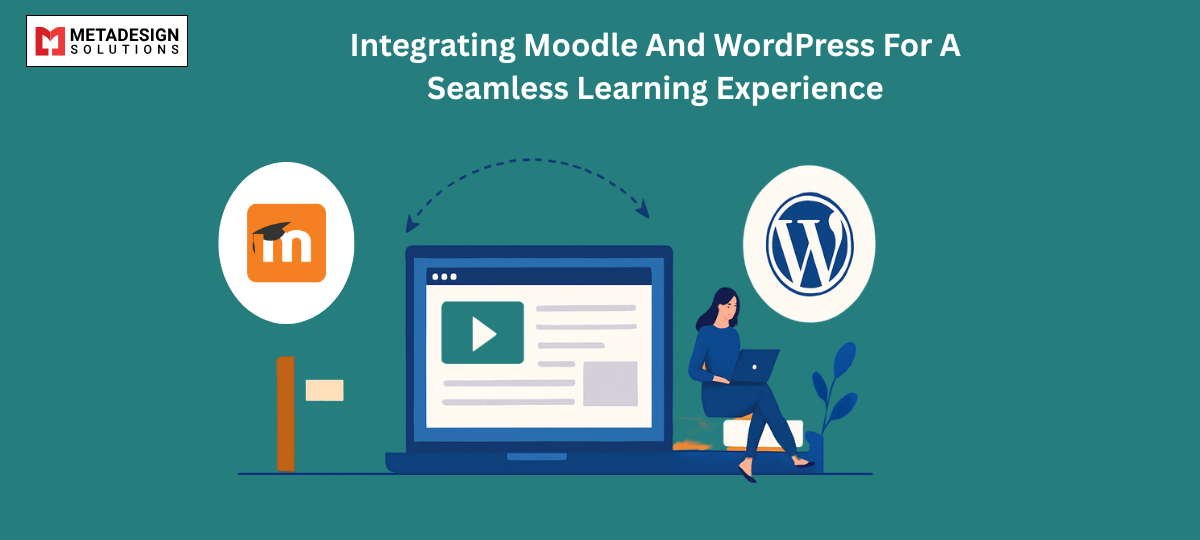Education technology has seen a tremendous evolution, especially in the realm of Learning Management Systems (LMS) and Content Management Systems (CMS). Moodle development services and WordPress stand out as two powerful platforms widely used in the educational sector. Moodle, an open-source LMS, excels in course management and online learning, while WordPress, a versatile CMS, offers exceptional content creation and website management capabilities. Combining these platforms can create a robust, integrated environment for educators and learners. This article delves into the process and benefits of integrating Moodle and WordPress, showcasing how a Moodle development company can enhance the integration process.
Understanding Moodle and WordPress Moodle
Moodle, short for Modular Object-Oriented Dynamic Learning Environment, is renowned for its adaptability and extensive feature set. It provides educators with tools for creating online courses, quizzes, assignments, and forums. Its user-friendly interface facilitates engagement, collaboration, and assessment within a virtual learning environment, making it a key focus for Moodle development companies.
WordPress
WordPress, initially designed for blogging, has evolved into a comprehensive CMS powering various types of websites. Its flexibility, numerous plugins, and themes make it an ideal choice for creating attractive websites and managing content. It’s widely appreciated for its intuitive interface, scalability, and extensive customization options.
Unlock Seamless Learning Experience
Looking to integrate Moodle and WordPress seamlessly? Book a consultation today to discover how we can help you build a powerful, cohesive educational platform.
Benefits of Integration Enhanced User Experience
The integration of Moodle and WordPress streamlines the user experience for both educators and learners. It enables a single sign-on (SSO) system, allowing users to access both platforms seamlessly without the need for multiple logins. This integration creates a unified environment where course content from Moodle can be easily accessed through the WordPress interface, enhancing convenience and usability.
Consolidated Content Management
WordPress excels in content management, offering superior capabilities for creating and organizing content. By integrating Moodle with WordPress, educators can leverage WordPress’s features to manage supplementary content, blog posts, announcements, and other relevant information alongside the structured course materials available on Moodle. This consolidation simplifies content management for instructors and improves accessibility for learners.
Personalization and Customization
WordPress’s extensive plugin ecosystem allows for unparalleled customization. By integrating Moodle with WordPress, educators gain the ability to personalize the learning experience further. They can incorporate additional functionalities, such as e-commerce plugins for selling courses, social media integration, or advanced analytics tools, enhancing the overall learning environment.
Integration Methods
Plugins and APIs
Several plugins facilitate the seamless integration of Moodle and WordPress. For instance, the “Edwiser Bridge” plugin acts as a bridge between the two platforms, synchronizing user data, courses, and enrollments. APIs (Application Programming Interfaces) play a crucial role in establishing communication between Moodle and WordPress, allowing data exchange and interaction between the systems. Moodle development services can assist in optimizing these integration methods.
Single Sign-On (SSO)
Implementing SSO simplifies the user experience by enabling users to access both Moodle and WordPress with a single set of credentials. This can be achieved using authentication plugins or by configuring LDAP (Lightweight Directory Access Protocol) or SAML (Security Assertion Markup Language) authentication systems to unify login processes.
Custom Development
In scenarios where specific requirements demand unique functionalities, custom development may be necessary. Skilled developers from a Moodle development company can create tailored solutions to integrate Moodle and WordPress seamlessly, aligning the platforms according to the institution’s needs.
Implementation Considerations
Compatibility and Versions
Before integrating Moodle and WordPress, it’s crucial to ensure compatibility between versions of both platforms and any plugins or themes used. Upgrading or downgrading versions might affect the integration, potentially leading to functionality issues.
Security Measures
Maintaining data security is paramount. Implementing secure communication protocols, encryption mechanisms, and regular security audits are essential to safeguard user data and prevent unauthorized access.
Scalability and Performance
As the user base grows, scalability becomes a crucial factor. Optimizing server configurations, employing caching mechanisms, and periodically reviewing performance metrics ensure smooth operations even with increased traffic and usage.
Conclusion
The integration of Moodle and WordPress offers a multitude of benefits, fostering an enriched learning environment and simplifying administrative tasks for educators. By leveraging the strengths of both platforms and employing seamless integration methods, educational institutions can provide a cohesive, user-friendly experience that enhances engagement and learning outcomes.
As technology continues to advance, the integration of versatile platforms like Moodle and WordPress represents a significant step forward in creating comprehensive and adaptable educational ecosystems, ultimately benefiting both educators and learners in the digital age.
Related Keyphrase:
#Moodle #WordPressIntegration #LearningManagementSystem #LMSIntegration #MoodleAndWordPress #EdTech #EducationTechnology #LearningExperience #MoodlePlatform #WordPressDevelopment #WordPressLMS #LMSDevelopment #TechSolutions #LearningPlatform #EducationalSolutions #WordPressServices #MoodleServices #CustomDevelopment #EdTechServices #HireWordPressDevelopers #HireMoodleDevelopers #WebDevelopmentCompany #TechConsulting #LMSDevelopmentCompany #TechIntegration #WordPressExperts #MoodleExperts #EdTechDevelopment #LearningManagementSystemIntegration #WordPressCustomization #MoodleCustomization #BusinessSolutions #HireTechExperts #WebDevelopmentServices #EdTechCompany #EducationalPlatformDevelopment #SoftwareDevelopmentServices #TechInnovation #LearningSolutions #MoodleDevelopmentCompany #MoodleDevelopmentServices



